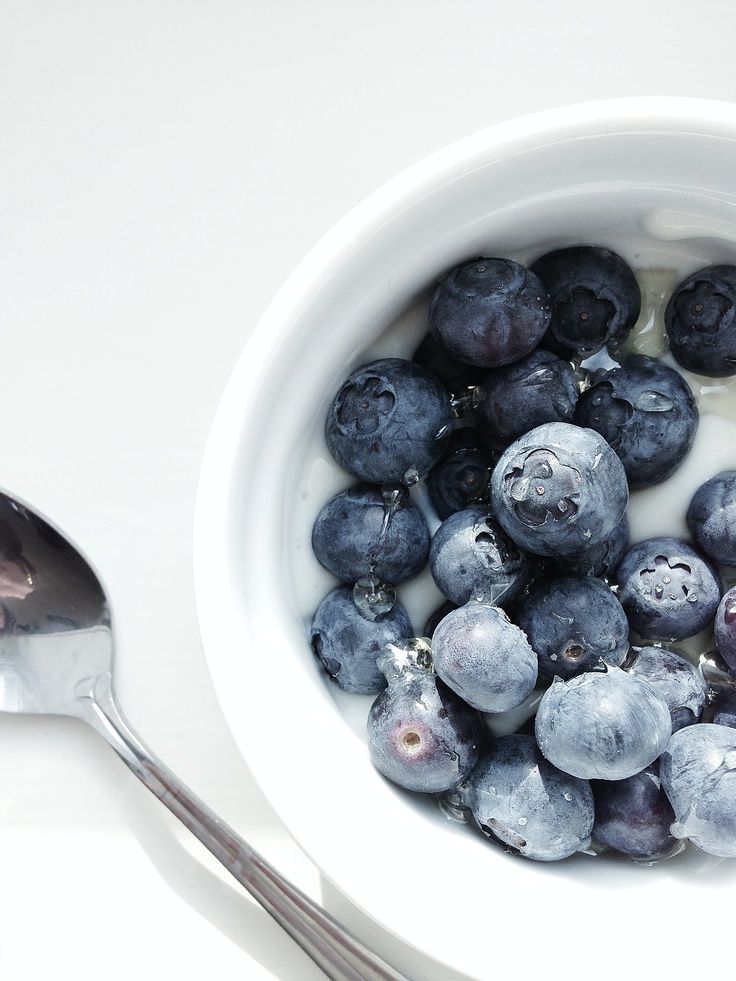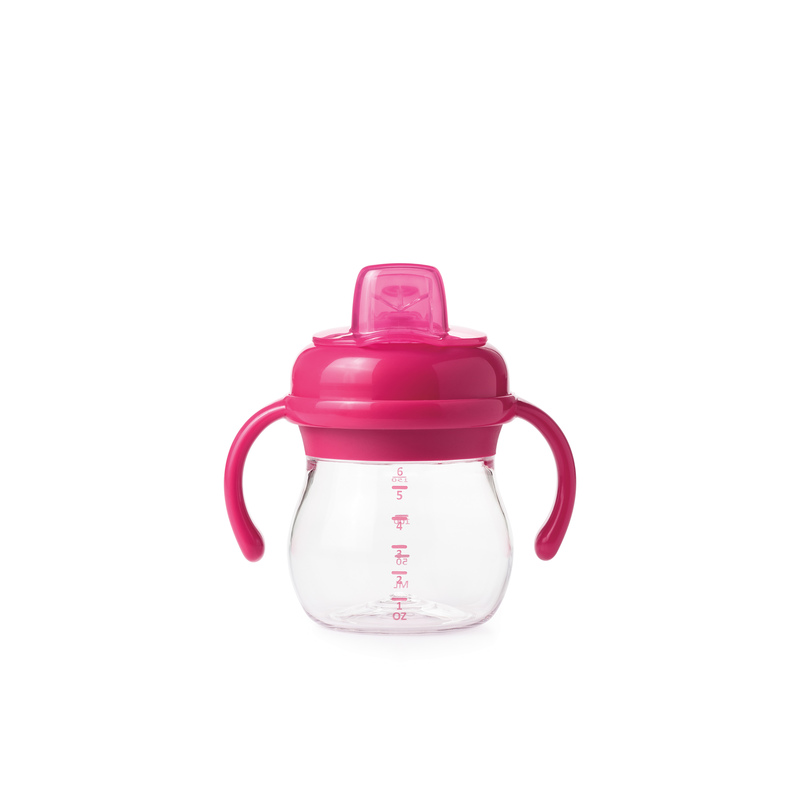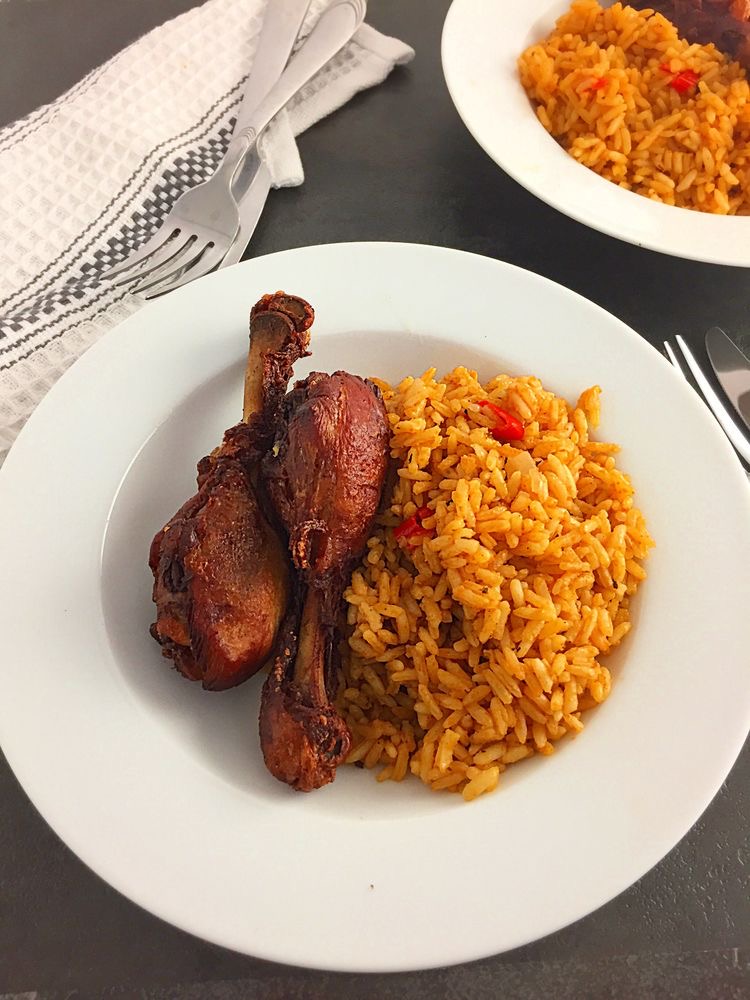When to feed baby blueberries
Blueberries for Babies - When Can Babies Eat Blueberries?
When can babies eat blueberries?
Blueberries may be introduced as soon as baby is ready to start solids, which is generally around 6 months of age. Due to their round shape, blueberries are a choking hazard so be sure to smash or quarter them to reduce the choking risk.
Baby just starting solids? Our guides have got you covered, from introducing allergens to breakfast ideas.
Warning
The round shape of blueberries makes them a potential choking hazard. Read on to learn how to prepare them for babies and toddlers.
Where do blueberries come from?
Blueberries grow around the globe, with Canada and the United States producing most of the world’s supply, though it wasn’t always this way. Blueberries descended from tundra plants that emerged across the Northern Hemisphere after the Ice Age. Many varieties of “blue” berries exist within this plant family, including bilberry (from Asia and Europe) and huckleberry (from North America) which are often colloquially called blueberries. Until the 19th century, these berries were typically harvested in the wild by communities during berry-picking gatherings in peak summer. Feeding troops during the American Civil War created demand for wild blueberry farming, and in the 20th century, modern agriculture bred the larger, lighter-colored blueberries that dominate the global market today.
Are blueberries healthy for babies?
Yes. Blueberries are a good source of fiber and offer small amounts of plenty of other nutrients, such as vitamin E to protect cells from damage, vitamin K for healthy blood, and vitamin C, which helps our bodies absorb iron from plants – so try serving blueberries alongside iron-rich plant foods like lentils, beans, nuts, and seeds. Blueberries are also among the fruits highest in antioxidants, including anthocyanins, which protect our cells from damage and support heart health, blood sugar regulation, immunity, and gut health. 1 2
1 2
Blueberry jams, jellies, and preserves typically contain added sugar, which should be limited in a baby’s diet, so try to wait on offering these blueberry products until after 12 months of age and, ideally, closer to age 2.
Rinse blueberries well before serving to baby, as berries are high on the list of fruits grown with the most pesticides.3 4 Rinsing fruit and veggies can help reduce pesticide residue.5
If you are foraging for your own blueberries, do your research and consult with local experts to confirm that the variety that you are picking is edible—then be sure to remove the green unripe berries, leaves, and stems before you start cooking.
★Tip: Hold off on rinsing blueberries until you are ready to eat them. Blueberries stay freshest in the refrigerator without rinsing.
Are blueberries a common choking hazard for babies?
Yes. The round shape, small size, and firmness of a blueberry makes it a choking hazard for babies. To minimize the risk, flatten fresh blueberries into a disc shape between your fingers, quarter them and stir into other foods, or cook them until they burst. As always, make sure you create a safe eating environment and stay within an arm’s reach of baby during meals. For more information on choking, visit our sections on gagging and choking and familiarize yourself with the list of common choking hazards.
To minimize the risk, flatten fresh blueberries into a disc shape between your fingers, quarter them and stir into other foods, or cook them until they burst. As always, make sure you create a safe eating environment and stay within an arm’s reach of baby during meals. For more information on choking, visit our sections on gagging and choking and familiarize yourself with the list of common choking hazards.
When can babies eat whole blueberries?
Once an older baby or toddler is taking bites and not stuffing their mouth with food, they can typically manage fresh whole blueberries in a safe eating environment. For most, this will be after the first birthday. That said, major healthy advisory bodies consider whole blueberries a common choking hazard until age four because of their round, firm shape. You may decide to work your way up to whole blueberries by flattening them a little less each time you serve them.
Are blueberries a common allergen?
No, blueberries are not a common allergen, although allergies to blueberries have been reported.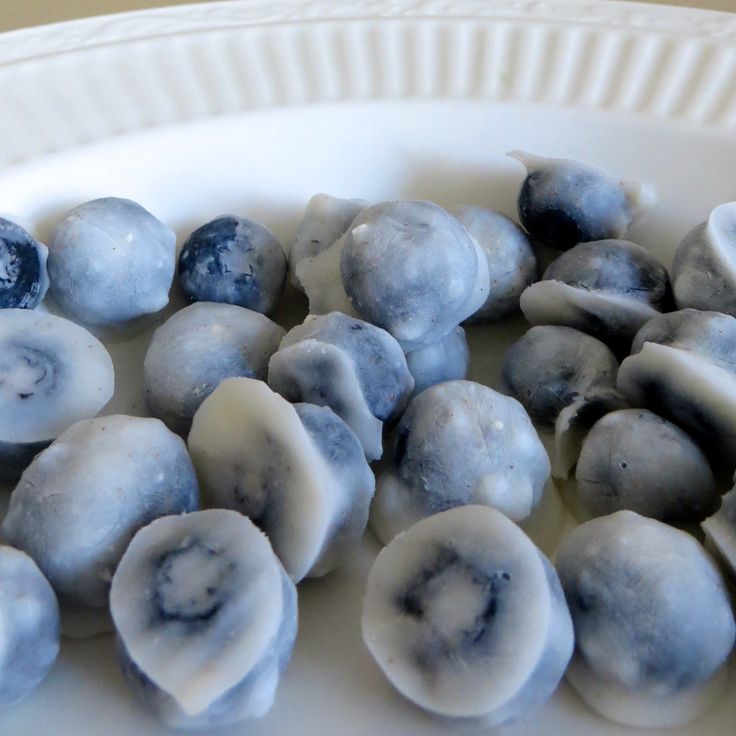 6 7 Individuals who are sensitive to blueberry may also react to lingonberry and cranberry, which are closely related.8 Blueberry contains a lipid transfer protein (LTP) allergen that is known to cross-react with LTPs of a number of other foods, especially stone fruits such as peach, apricot, and cherry. This protein may also cross-react with raspberry, grape, chestnut, hazelnut, maize, barley, asparagus, carrot, and lettuce.9
6 7 Individuals who are sensitive to blueberry may also react to lingonberry and cranberry, which are closely related.8 Blueberry contains a lipid transfer protein (LTP) allergen that is known to cross-react with LTPs of a number of other foods, especially stone fruits such as peach, apricot, and cherry. This protein may also cross-react with raspberry, grape, chestnut, hazelnut, maize, barley, asparagus, carrot, and lettuce.9
As you would when introducing any new food, start by offering a small amount during the first few servings. If there is no adverse reaction, gradually increase the amount served over future meals.
Are wild blueberries better than other kinds?
Not necessarily. Wild blueberries offer similar nutrients as the larger high-bush blueberries, although they tend to contain more antioxidants.10 11 Wild blueberries tend to be much smaller (about the size of a toddler’s thumbnail) which makes them a slightly higher choking risk and harder to modify. That said, if you have access to wild blueberries, enjoy! Just flatten them before serving to reduce the choking risk.
That said, if you have access to wild blueberries, enjoy! Just flatten them before serving to reduce the choking risk.
How do you prepare blueberries for babies with baby-led weaning?
Every baby develops on their own timeline, and the suggestions on how to cut or prepare particular foods are generalizations for a broad audience. Your child is an individual and may have needs or considerations beyond generally accepted practices. In determining the recommendations for size and shape of foods, we use the best available scientific information regarding gross, fine, and oral motor development to minimize choking risk. The preparation suggestions we offer are for informational purposes only and are not a substitute for child-specific, one-on-one advice from your pediatric medical or health professional or provider. It is impossible to fully eliminate all risk of a baby or child choking on any liquid, puree, or food. We advise you to follow all safety protocols we suggest to create a safe eating environment and to make educated choices for your child regarding their specific needs.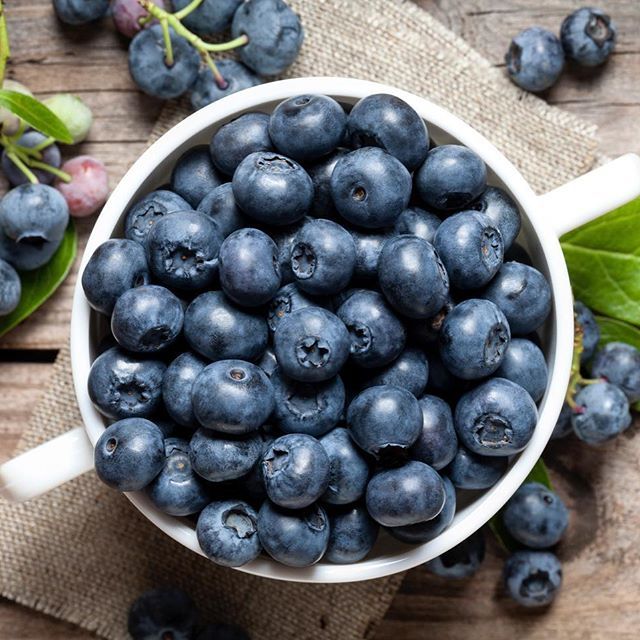 Never disregard professional medical advice or delay in seeking it because of something you have read or seen here.
Never disregard professional medical advice or delay in seeking it because of something you have read or seen here.
6 to 8 months old: Cook ripe, fresh or frozen blueberries into warm cereals until the berries burst. Alternatively, smash whole berries that have been cooked until soft, then fold the smashed berries into soft, scoopable foods like grain porridge, ricotta cheese, or yogurt. You can also flatten uncooked blueberries into a disc to reduce the choking hazard, but know that babies at this age may struggle to pick up the small pieces of food, and putting food in a baby’s mouth significantly increases choking risk. Cooked blueberries (in muffins, pancakes, and other baked goods) can be left whole because they soften and burst with heat.
9 to 12 months old: Flatten large ripe blueberries to make little discs and serve directly on the tray or table, letting baby try to pick them up independently with their developing pincer grasp (where the thumb and forefinger meet).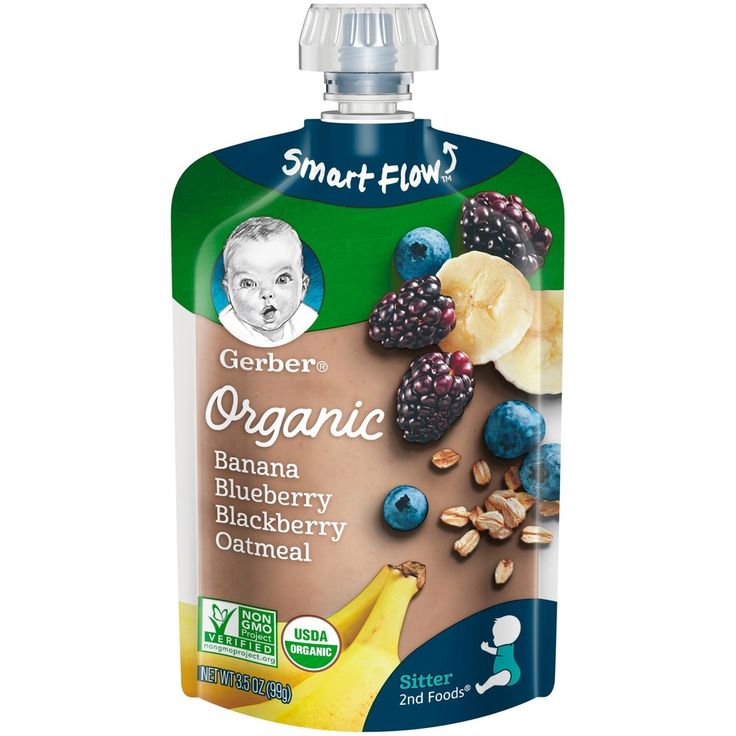 You can also continue serving blueberries in foods like yogurt, or bite-sized pieces of baked goods with blueberries in them.
You can also continue serving blueberries in foods like yogurt, or bite-sized pieces of baked goods with blueberries in them.
12 to 24 months old: Continue to flatten ripe blueberries into discs, flattening a little less as your child’s eating skills mature and your comfort increases. At this age, many toddlers are also ready to eat a whole blueberry. Before you offer one, assess the child’s eating ability. If you see the child consistently chewing well and not stuffing their mouth, and you feel comfortable, you may offer a whole ripe blueberry in a safe eating environment. Make sure to offer one at a time, at first, model how to crush the berry with your teeth, and stay within arm’s each of the child. If the child is not quite ready for the whole berry, build up eating ability by flattening the berries a little less each time you serve.
Flattened blueberry for young babies 6 to 12 months of age.Flattened blueberry for young babies 6 to 12 months of age.Mix up your mornings with ideas from our guide, 50 Breakfasts for Babies & Toddlers.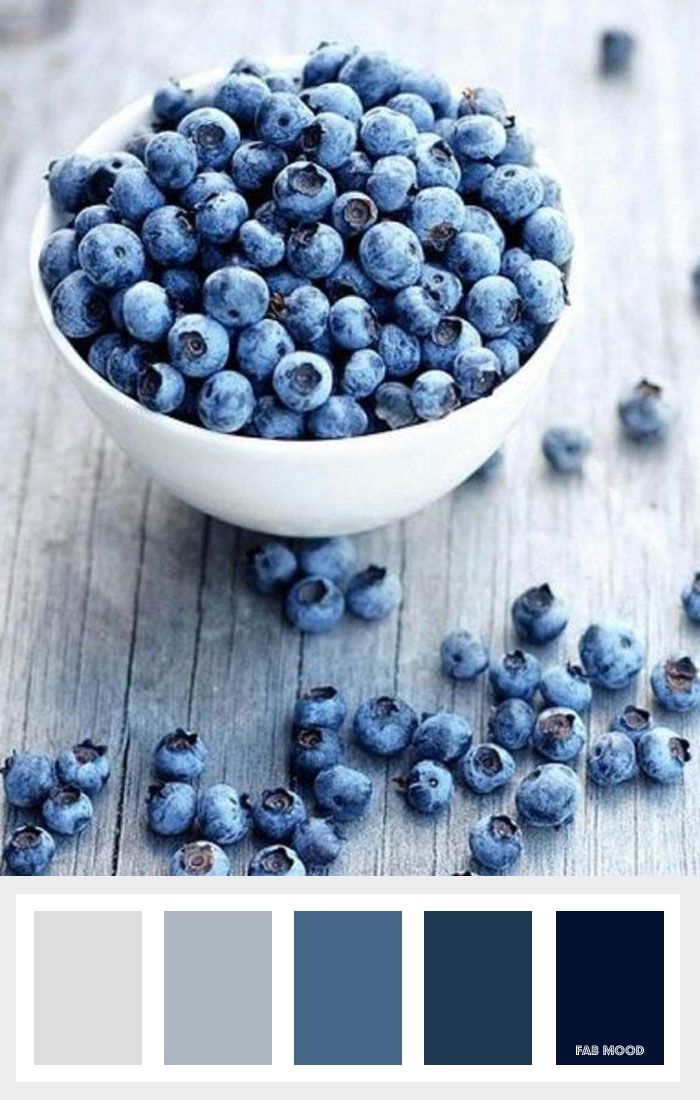
What are recipe ideas for cooking with blueberries?
Blueberries are a terrific fruit for sweet treats, but there are also plenty of savory dishes that benefit from their sweet-tart flavor. Cook blueberries into a sauce that balances the richness of meats like bison, duck, or venison. You can serve the sauce on the cooked meats or use it as a marinade. Blueberries also taste delicious with arugula, spinach, and other salad greens sprinkled with fresh unripened cheeses like goat cheese and ricotta cheese. They can also be blended with olive oil and balsamic vinegar to make a vinaigrette. Want to bake? Blueberries work in baked goods like buttermilk scones, lemon rosemary cornbread, or yogurt snacking cake.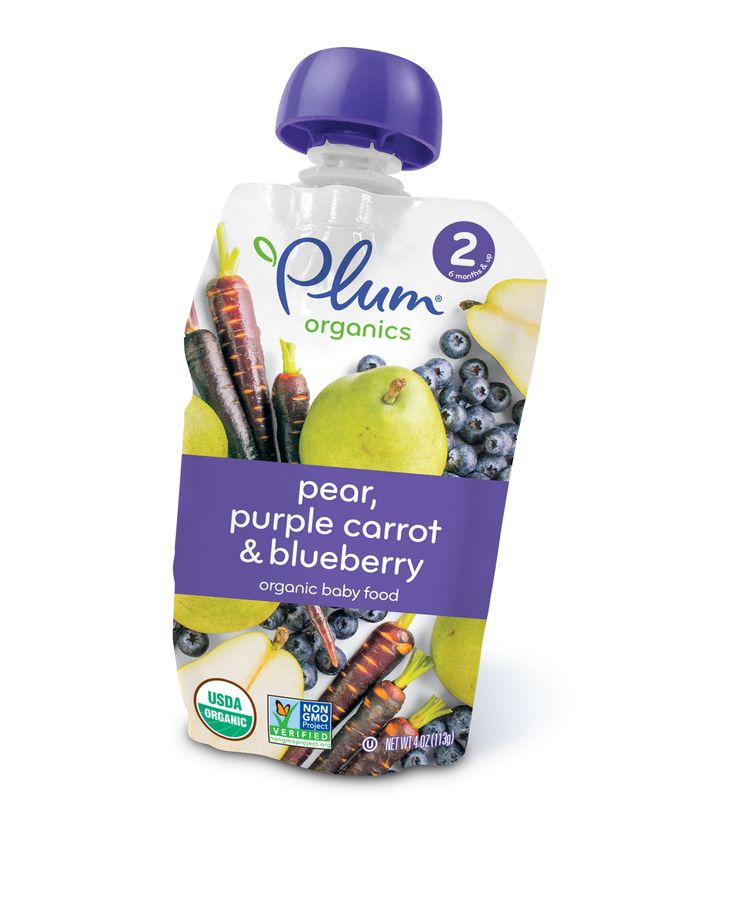
Recipe: Purple Oatmeal
Yield: 1 ½ c (360 ml)
Cook Time: 15 minutes
Age: 6 months+
Ingredients
- ½ c (48 g) dry instant oats
- ½ c (120 ml) unsweetened coconut milk
- ½ c (74 ml) blueberries
- ½ tsp (1 g) unsweetened desiccated coconut flakes (optional)
This recipe contains a common allergen: coconut (milk). Only serve to a child after this allergen has been safely introduced. While coconut allergy is rare, it is classified as a tree nut by the United States Food and Drug Administration.
Directions
- Combine the oats, coconut milk, and ½ c (120 ml) of water in a saucepan. If you opened a can of coconut milk, consider using the rest for chia pudding.
- Bring the mixture to a boil, then reduce heat to create a bare simmer.
- While the oats are cooking, wash the blueberries. Remove any stems.
- Add half of the blueberries to the pot then use a fork or potato masher to smash the berries.
 Make sure to break down the skins (they are super healthy!) but if any large pieces remain, pick them out to reduce the risk.
Make sure to break down the skins (they are super healthy!) but if any large pieces remain, pick them out to reduce the risk. - Turn off the heat and cover the pot. Let the mixture rest for 5 minutes until the oatmeal has thickened and cooled to room temperature.
- While the oatmeal is thickening, mash the remaining berries.
- Scoop some oatmeal into baby’s bowl. Spoon some of the remaining mashed berries on top and sprinkle with unsweetened desiccated coconut flakes.
Serve the Oatmeal
- Offer the oatmeal to baby and let the child self-feed.
- To encourage the use of utensils, lay a pre-loaded spoon next to the oatmeal for baby to pick up. Alternatively, pass the pre-loaded spoon in the air for the child to grab from you.
To Store: Purple Oatmeal keeps in an air-tight container in the refrigerator for 3 days or in the freezer for 2 months.
Flavor Pairings
The tart flavor of blueberries pairs well with almond, apple, pear, turkey, venison, and walnut.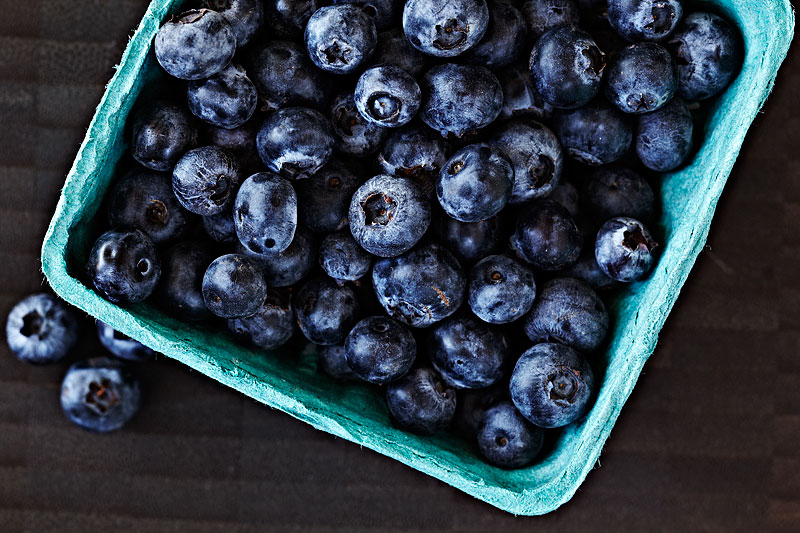
Reviewed by
J. Truppi, MS, CNS. Certified Nutrition Specialist®
V. Kalami, MNSP, RD, CSP. Board-Certified Pediatric Dietitian and Nutritionist
K. Tatiana Maldonado, MS, CCC-SLP, CBIS, CLEC. Pediatric Feeding Therapist
K. Grenawitzke, OTD, OTR/L, SCFES, IBCLC, CNT. Pediatric Feeding Therapist
Dr. S. Bajowala, MD, FAAAAI. Board-Certified Allergist & Immunologist (allergy section)
Dr. R. Ruiz, MD, FAAP. Board-Certified General Pediatrician & Pediatric Gastroenterologist
- Kalt W, Cassidy A, Howard LR, Krikorian R, Stull AJ, Tremblay F, Zamora-Ros R. Recent Research on the Health Benefits of Blueberries and Their Anthocyanins. Adv Nutr. 2020 Mar 1;11(2):224-236. doi: 10.1093/advances/nmz065. PMID: 31329250; PMCID: PMC7442370. Retrieved June 16, 2022
- Skrovankova, S., Sumczynski, D., Mlcek, J., Jurikova, T., & Sochor, J. (2015). Bioactive Compounds and Antioxidant Activity in Different Types of Berries.
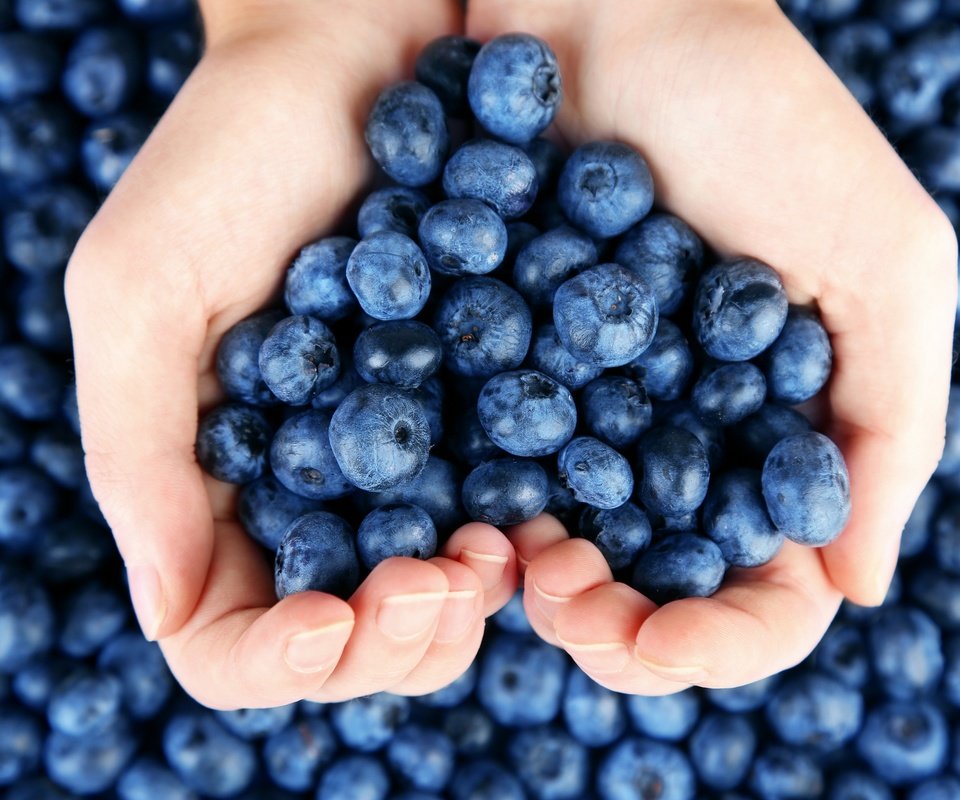 International journal of molecular sciences, 16(10), 24673–24706. DOI: 10.3390/ijms161024673. Retrieved June 16, 2022.
International journal of molecular sciences, 16(10), 24673–24706. DOI: 10.3390/ijms161024673. Retrieved June 16, 2022. - Yeh DA, Drummond FA, Gómez MI, Fan X. The Economic Impacts and Management of Spotted Wing Drosophila (Drosophila Suzukii): The Case of Wild Blueberries in Maine. J Econ Entomol. 2020 Jun 6;113(3):1262-1269. doi: 10.1093/jee/toz360. Retrieved June 16, 2022.
- Martin RR, Tzanetakis IE. High Risk Blueberry Viruses by Region in North America; Implications for Certification, Nurseries, and Fruit Production. Viruses. 2018 Jun 26;10(7):342. doi: 10.3390/v10070342. Retrieved June 16, 2022.
- Bajwa, U., & Sandhu, K. S. (2014). Effect of handling and processing on pesticide residues in food- a review. Journal of food science and technology, 51(2), 201–220. DOI: 10.1007/s13197-011-0499-5. Retrieved June 16, 2022.
- Gebhardt, C., Vieths, S., Gubesch, M., Averbeck, M., Simon, J. C., & Treudler, R. (2009). 10 kDa lipid transfer protein: the main allergenic structure in a German patient with anaphylaxis to blueberry.
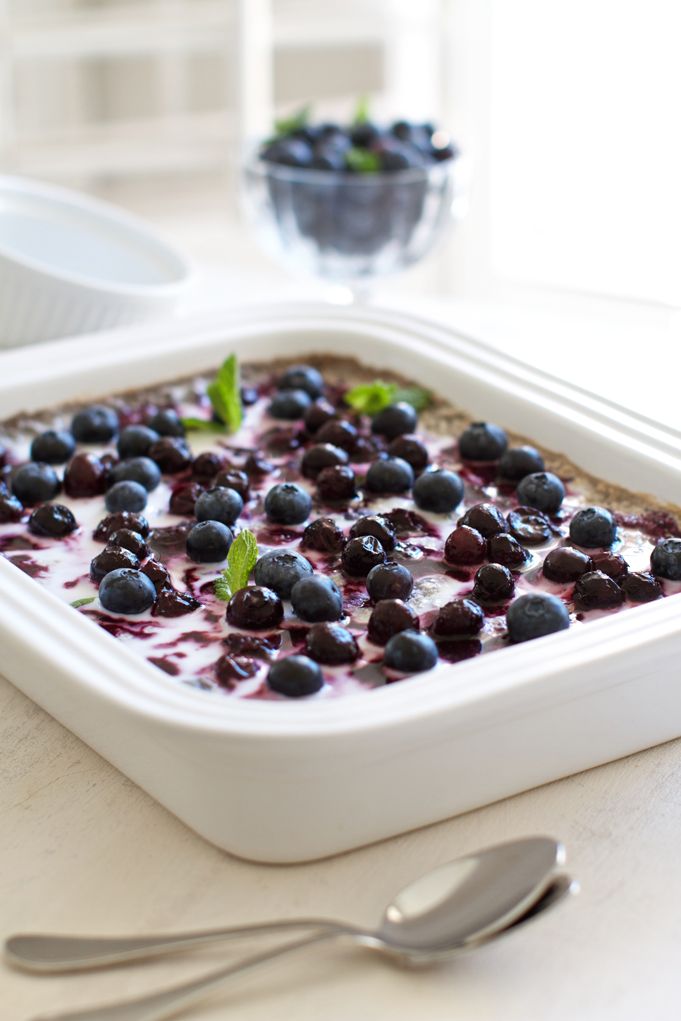 Allergy, 64(3), 498–499. DOI: 10.1111/j.1398-9995.2008.01923.x. Retrieved June 16, 2022
Allergy, 64(3), 498–499. DOI: 10.1111/j.1398-9995.2008.01923.x. Retrieved June 16, 2022 - Dereci, S., Orhan, F., Koca, T., & Akcam, M. (2015). Prevalence of blueberry allergy in a Turkish population. Annals of allergy, asthma & immunology : official publication of the American College of Allergy, Asthma, & Immunology, 114(3), 259–260. DOI: 10.1016/j.anai.2014.12.016. Retrieved June 16, 2022.
- Yman L. Botanical relations and immunological cross-reactions in pollen allergy. 2nd ed. Pharmacia Diagnostics AB. Uppsala. Sweden. 1982: ISBN 91-970475-09. Retrieved June 16, 2022.
- Marzban G, Herndl A, Kolarich D, Maghuly F, Mansfeld A, Hemmer W, Katinger H, Laimer M.
Identification of four IgE-reactive proteins in raspberry (Rubus ideaeus L.). Mol Nutr Food Res 2008;52(12):1497-506. Retrieved June 16, 2022. - Dróżdż, P., Šėžienė, V., & Pyrzynska, K. (2018). Mineral Composition of Wild and Cultivated Blueberries. Biological trace element research, 181(1), 173–177.
 DOI: 10.1007/s12011-017-1033-z. Retrieved June 16, 2022.
DOI: 10.1007/s12011-017-1033-z. Retrieved June 16, 2022. - Kalt, W., Cassidy, A., Howard, L. R., Krikorian, R., Stull, A. J., Tremblay, F., & Zamora-Ros, R. (2020). Recent Research on the Health Benefits of Blueberries and Their Anthocyanins. Advances in nutrition (Bethesda, Md.), 11(2), 224–236. DOI: 10.1093/advances/nmz065. Retrieved June 16, 2022
When Is It OK for Babies to Eat Blueberries?
Written by WebMD Editorial Contributors
Reviewed by Dan Brennan, MD on March 10, 2021
In this Article
- Introducing Babies to Blueberries
- Nutritional Benefits of Blueberries for Babies
- How to Prepare Blueberries for Babies
- Blueberry Safety Precautions for Babies
In addition to being delicious, blueberries are one of the healthiest foods you can eat. Blueberries are rich in vitamins, minerals, and antioxidants that may protect against heart disease and cancer as well as boost your immune function and reduce inflammation.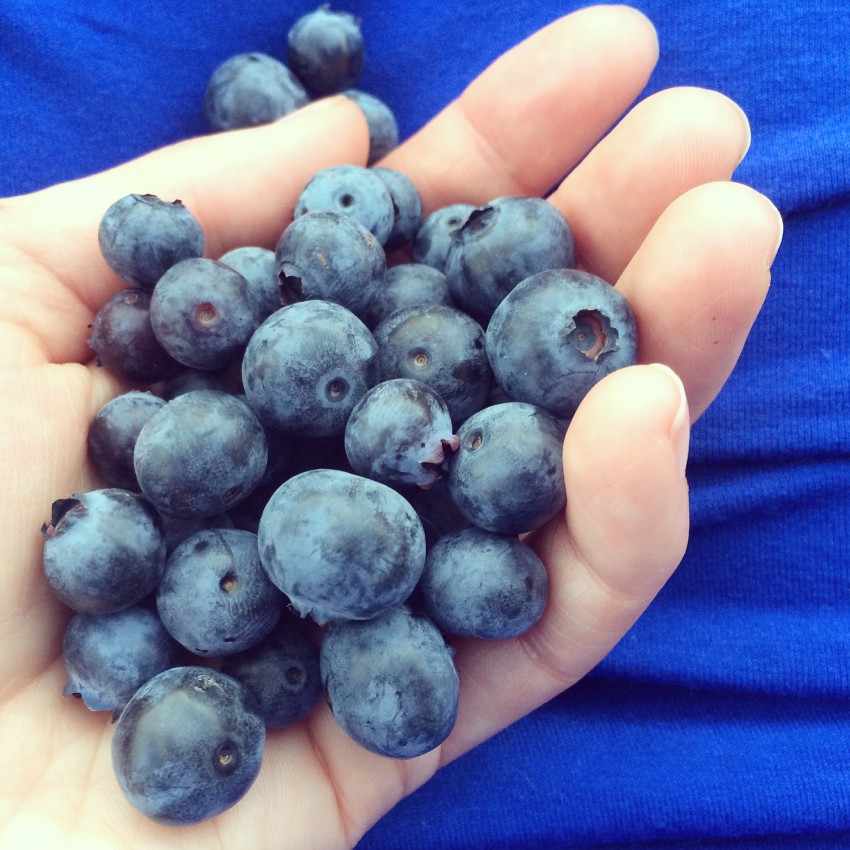 Later in life, blueberries may delay the effects of vascular dementia or Alzheimer's disease. Read on to learn when you can give blueberries to your baby and what safety precautions you should take.
Later in life, blueberries may delay the effects of vascular dementia or Alzheimer's disease. Read on to learn when you can give blueberries to your baby and what safety precautions you should take.
Introducing Babies to Blueberries
For the first 6 months of your baby's life, breastmilk is the ideal food. Around 6 months of age, your baby will start to need nutrition from other sources of food as well, though breastmilk or formula will continue to be the most important source of nutrition for your baby during their first year. Once your baby is developmentally ready to start solid foods, blueberries can be one of the first foods you give them.
To make sure your baby is developmentally ready to start solids, they should:
- Be able to hold their head up
- Show interest in your food
- Have doubled their birthweight or weigh at least 13 pounds
- Be able to move food from a spoon to the back of their throat
There is no particular order that you need to follow regarding introducing new foods to your baby.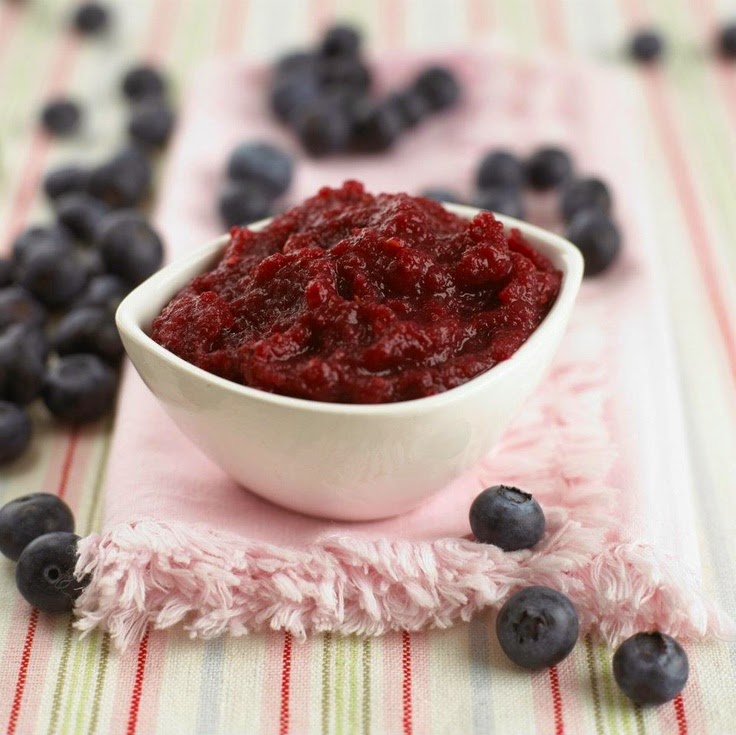 For example, there is no research to suggest that babies who are introduced to fruits before vegetables will dislike vegetables. The American Academy of Pediatrics recommends introducing one mashed or pureed single-ingredient food at a time. You should wait 3 to 5 days before introducing another food to see if your baby has a reaction to the first food.
For example, there is no research to suggest that babies who are introduced to fruits before vegetables will dislike vegetables. The American Academy of Pediatrics recommends introducing one mashed or pureed single-ingredient food at a time. You should wait 3 to 5 days before introducing another food to see if your baby has a reaction to the first food.
Blueberries should be one of many early foods you introduce to your baby. To foster healthy eating habits, you should:
- Offer your baby a wide variety of foods.
- Let your baby take the lead in deciding how much to eat. Babies will often turn their heads away from food once they've had enough.
- Let your baby touch and explore their food.
- Make starting solids a fun, positive experience.
Nutritional Benefits of Blueberries for Babies
Blueberries are one of the most nutrient-dense berries. They are a great source of:
- Vitamin K
- Manganese
- Vitamin C
- Fiber
- Copper
They are also full of phytonutrients, which are nutrients found in plants. In particular, blueberries are one of the best sources of anthocyanin, a phytonutrient responsible for the dark blue color of blueberries. Early research suggests that anthocyanin can be associated with:
In particular, blueberries are one of the best sources of anthocyanin, a phytonutrient responsible for the dark blue color of blueberries. Early research suggests that anthocyanin can be associated with:
- Anti-inflammatory properties
- Preventing cancer
- Preventing heart disease
- Controlling obesity
- Controlling diabetes
How to Prepare Blueberries for Babies
Blueberries can be pureed for younger babies. If your baby is a little older and has some experience with solids, you can mash blueberries for them instead. Make sure the berries are broken up, since the whole berry is a choking hazard. Additionally, don't add sugar, salt, or other seasonings to your baby's food. If you season your baby's food and they have a reaction to it, you won't know whether they're allergic to the seasoning or the food.
Blueberries pair well with a wide range of other foods. Once you have established that your baby isn't allergic to each individual food, feel free to mix blueberries with other foods to add variety to their diet.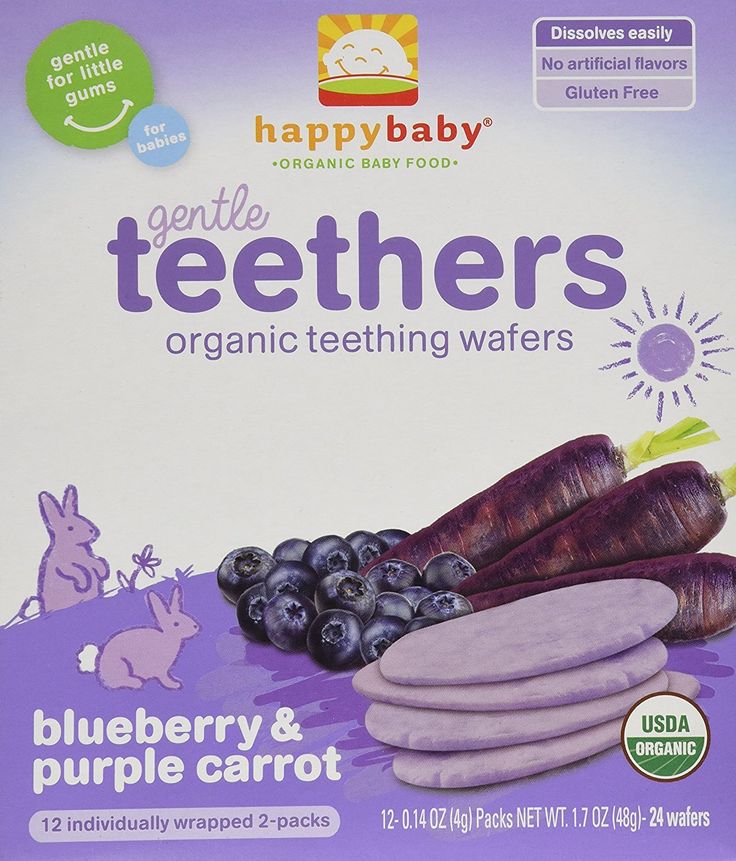 Some ideas for foods to mix with blueberries include:
Some ideas for foods to mix with blueberries include:
- Yogurt
- Mangoes
- Peaches
- Oatmeal
- Applesauce
- Chicken
- Bananas
As soon as your baby starts eating solids such as blueberries, make family meals part of your daily routine. Children who eat meals with their family are:
- Less likely to be obese
- More likely to eat more fruits and vegetables
- Less likely to be depressed
- Less likely to display violent behavior
- More likely to have higher grades in school
- Less likely to abuse drugs or alcohol
Blueberry Safety Precautions for Babies
There are some precautions you should take to make sure the blueberries your baby eats are safe. There are three common issues with food safety:
Foodborne illness. Raw fruits and vegetables can contain germs that can make you sick such as Salmonella, E. coli, and Listeria. To reduce your chances of getting sick, follow these guidelines:
- Buy produce that isn't damaged.

- Separate fruits and vegetables from meat products.
- Keep pre-cut fruits and vegetables cold.
- Wash your hands and all surfaces and utensils that your blueberries will touch.
- Wash your blueberries under running water. Do not use soap, bleach, or disinfectants.
- Discard any damaged blueberries.
- Refrigerate blueberries within 2 hours of preparing them.
Choking hazards. Whole blueberries are a choking hazard. Puree blueberries when you first introduce them to your baby. Once your baby graduates to finger foods, either mash the blueberries or cut them into smaller pieces.
Allergies. Fortunately, blueberry allergies are very rare, so it's unlikely that your baby will be allergic to them. However, when you give your baby their first blueberries, you should wait for 3 to 5 days before giving them another new food just to make sure they don't have a reaction.
Growing blueberries in the garden - place and soil, care, reproduction, fertilizer
An amazing and unusual blueberry is a "rejuvenating apple", as it slows down the aging process. Growing blueberries in the garden or in the garden is an interesting and exciting process.
Growing blueberries in the garden or in the garden is an interesting and exciting process.
This berry combines a lot of useful vitamins (A, B, C and PP), organic acids, antioxidants and minerals. Due to manganese, which is part of it, it improves carbohydrate metabolism, and is also indispensable in the treatment of diabetes. 9Ol000 Possible pests and diseases
A place for blueberries in the garden
Blueberries, according to reviews, will not be afraid of winter frosts. But you need to protect it from early frosts, which can suddenly come at a time when less than fifty days remain before the harvest.
But the unexpectedly low spring temperature will not be a threat, because this berry blooms only in mid-May.
Blueberry bush (photo)
Blueberries are very fond of moisture, so the ground needs to be properly moistened. An excellent option would be mail, with a groundwater level of thirty centimeters to one meter.
But such a berry does not like constant water stagnation.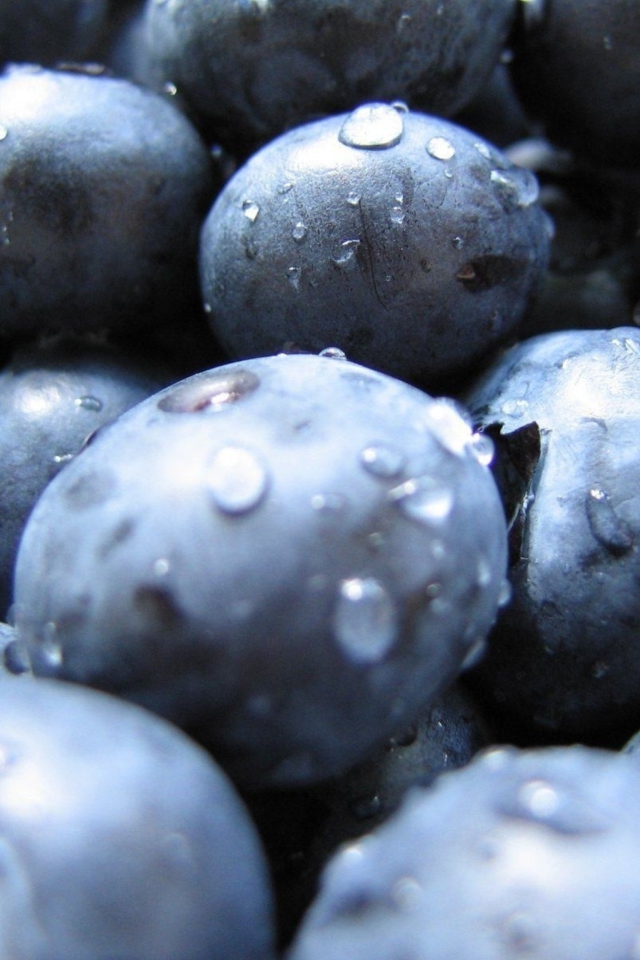 Cultivated blueberries, unlike the forest "sister", give more harvest in the sun.
Cultivated blueberries, unlike the forest "sister", give more harvest in the sun.
There are certain requirements for the mail, because it must be acidic, with a pH level of 3.8. It is very rare to grow blueberries if the soil is above normal pH.
Soil preparation before planting
Orchard soil not very favorable for blueberry growth. It is not uncommon for shrubs to die without giving fruit. Therefore, the place that is being prepared for planting should first be fertilized.
Holes are dug, measuring 1.5 by 1.5 meters and about sixty centimeters deep. What soil composition is suitable for blueberries? The earth should be mixed with peat, in a ratio of two to one. In order to acidify the mixture, a little sulfur is added to it, in the form of a powder.
If the soil is heavy, it is additionally mixed with river sand or oak leaves that have rotted. It is worth taking care of such preparation in advance, at least a month in advance. As a rule, blueberries are planted in October or November, but the soil is prepared, respectively, in autumn in September. It is very important that the prepared garden soil settles in the dug holes.
It is very important that the prepared garden soil settles in the dug holes.
Rules for planting bushes
The quality of planting depends, first of all, on the further growth of blueberries, and then the fruits themselves. You need to follow certain rules when planting this plant:
Before planting, bushes should be in a dark place, and be sure to be submerged in water. They also need to be constantly moisturized.
Care of seedlings
How to grow blueberries in the garden? The application of sawdust is the best care for young seedlings of this berry. The layer must be at least ten centimeters, before falling asleep, sawdust must be mixed with the soil. Kitchen cleaners can also be used, but the use of straw and fallen leaves will have a lesser effect, but it's better than nothing at all.
In the absence of cover, all year round, the soil must be constantly loosened, to a depth of about three centimeters. Closer to the bushes themselves, the earth should be especially loose. After all, some of the roots of the berry are not far from the surface.
After all, some of the roots of the berry are not far from the surface.
For harvesting, the pruning stage is also very important, which begins when the bushes are three to four years old. Damaged branches are removed first, as well as those that have dried up or become ill. The ideal bush consists of six or eight branches, which should be healthy, because they will then become the main skeleton of the plant.
Good care brings a rich harvest
Branches over four years old should be cut to a height of twenty centimeters. Then the plant will be healthy and will be able to produce more strong shoots.
And even if a lot of lateral branches with formed buds appeared on the bush, they also need to be removed, because the berries on them will grow not only small, but also tasteless.
Bushes older than fifteen years, for rejuvenation, are shortened to a height of no more than twenty-five centimeters.
The best time for this stage is spring. But it is very important that there are no frosts.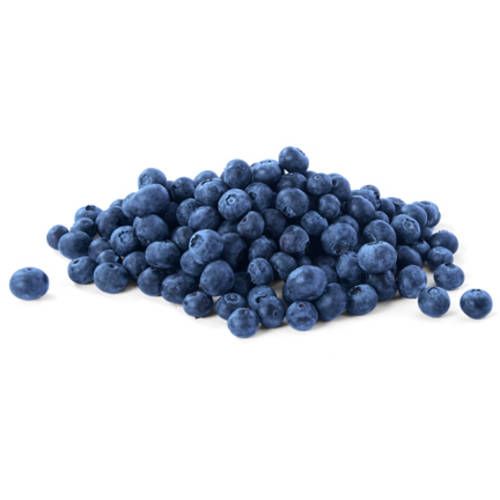 Also, late pruning, during flowering, will significantly reduce the amount of the entire blueberry crop.
Also, late pruning, during flowering, will significantly reduce the amount of the entire blueberry crop.
This berry should be watered regularly, but high humidity should be avoided, because it can lead to diseases of the bushes, especially root rot.
Propagation of blueberries
Blueberries can be propagated by seeds or by dividing bushes.
When using the first propagation method, you must first obtain seeds. Berries that are already ripe should be crushed and mixed with water in large quantities, and then drained. This procedure must be repeated until the water is completely clean. Thus, seeds are obtained that can already be planted, but they must first be dried.
A rich harvest of garden blueberries (photo)
Then you need to prepare boxes or pots, fill them with peat, and plant blueberry seeds there. In a few weeks, the first shoots will appear. For the winter, they should be moved to a room that will be sufficiently lit, with a temperature of five to ten degrees. After a year, seedlings can be planted in the garden.
After a year, seedlings can be planted in the garden.
To separate a bush, it should be dug up and divided, so that up to five intact buds remain on each new one. It is best to plant blueberries in garden autumn. Then planting blueberries in the ground follows the same principle as with two- or three-year-old bushes.
Top dressing of bushes
To get more high-quality harvest, it is necessary to feed blueberries. This is especially important if the soil is light or sandy and does not have humus. Organic fertilizers are suitable for such purposes, namely:
- Decayed manure;
- Compost that is rich in nutrients;
- Peat powder that contains bird droppings (which are especially nutritious for such purposes) and minerals.
At intervals of two to three years, these fertilizers are mixed with the layer of soil above. With the calculation of two to four kilograms of top dressing per square meter of land around the bushes.
If the soil has a pH of four to five, the following mineral fertilizers are used:
- Ammonium sulphate;
- Magnesium and potassium sulfate;
- Superphosphate.
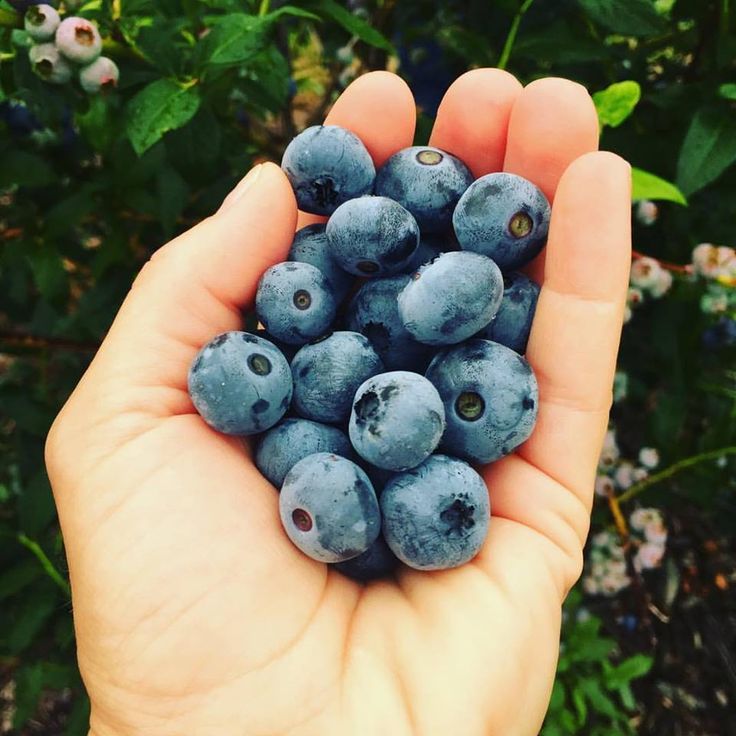
For blueberries, the following top dressings will have a positive effect:
- Piafoxan blue, which does not contain chlorine;
- "Aciplex" is a salt that is used for plants that grow on bolts and for conifers.
Blueberry bush (photo)
How to feed garden blueberries in spring? Cultivated blueberries should be fertilized in this way:
Between March and April: for young bushes - thirty grams per square meter. For bushes with fruits - sixty grams per sq.m.
How to fertilize blueberries in summer? The second dose is applied at the beginning of June: for young bushes - twenty grams per square meter. m., and for fruitful ones only 3 g.
At the first dose of bait, it is better to use Aciplex, and during the second dose, Piafoscan blue should be preferred. They need to be proportionally distributed around all the blueberry bushes, and then sealed with a hoe into the ground, but the main thing is not deep. If it is decided to use dissolved salts, then they are diluted with the expectation of no more than ten to twenty grams per bucket of water. Having calculated the total dose, it must be introduced gradually, several times, every ten days.
Having calculated the total dose, it must be introduced gradually, several times, every ten days.
For the second bait, which will be in June, with a plentiful harvest, the amount of salt can be increased by 10-20 grams per square meter. This procedure is repeated at intervals of a couple of years.
At high pH values, namely more than five, it is necessary to sprinkle the area around the bushes with sulfur every year, fifty grams will be enough. This is worth continuing until the proper acidity is restored. But most often, if sawdust is used, then additional steps are not needed.
Harvest
Blueberry harvest from June to September. Since the berries ripen unevenly, it is worth picking them every five to ten days. If the fruits are blue-violet or black, it means that they have begun to ripen. But it will be possible to tear them only after a week, when the berries become a uniform color.
The area where the fruit attaches to the stem will no longer have a reddish tint. Only at this stage will the full aroma of blueberries be able to open. During such a period, many varieties of this berry may still remain unpicked, then it will become even tastier.
Only at this stage will the full aroma of blueberries be able to open. During such a period, many varieties of this berry may still remain unpicked, then it will become even tastier.
Picking blueberries should be done carefully
In order not to damage the blueberries during picking, you need to pick them carefully, gently grab them with two fingers and twist them a little. Juice should not come out from the fruit. In an hour, you can collect from four to ten kilograms. It all depends on the variety of this berry, as well as on the skill and dexterity of the picker.
Unlike forest blueberries, garden blueberries have a stronger shell, making them easier to store. In temperature conditions from zero to one degree, it will not deteriorate for four to six weeks. You can make marmalade, jam, jelly or drinks.
Expert opinion
Yuliya Yuryevna
I have a large garden and vegetable garden, several greenhouses. I love modern methods of plant cultivation and soil mulching, and I share my experience.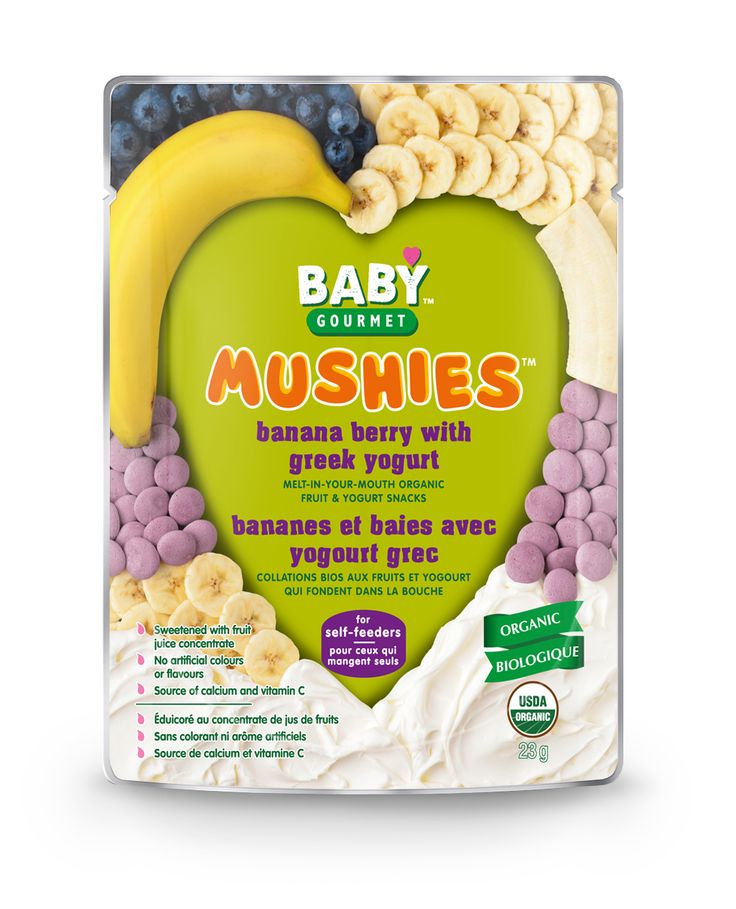
Ask a question
Possible pests and diseases
Although the bush described is fairly resistant to attack by harmful insects, it can be affected by aphids and scale insects. These pests are also dangerous because they often carry an infection, therefore, if you have the first symptoms, you should immediately start treatment.
If aphids are noticed on the shoots, you need to start by removing the anthills under the plant, because it is their inhabitants that spread the aphids around the garden. You can pour boiling water over the anthill, cover it with dry boric acid, or use a specific remedy.
A thick layer of ash can be scattered under the plant. Sometimes, with a small population of harmful insects, they are simply washed away with a strong stream of water. This is an actual method during the ripening period of the crop, when a strong chemical preparation cannot be used.
Alternatively, you can spray with a solution of boric acid or a mixture of laundry soap and ash.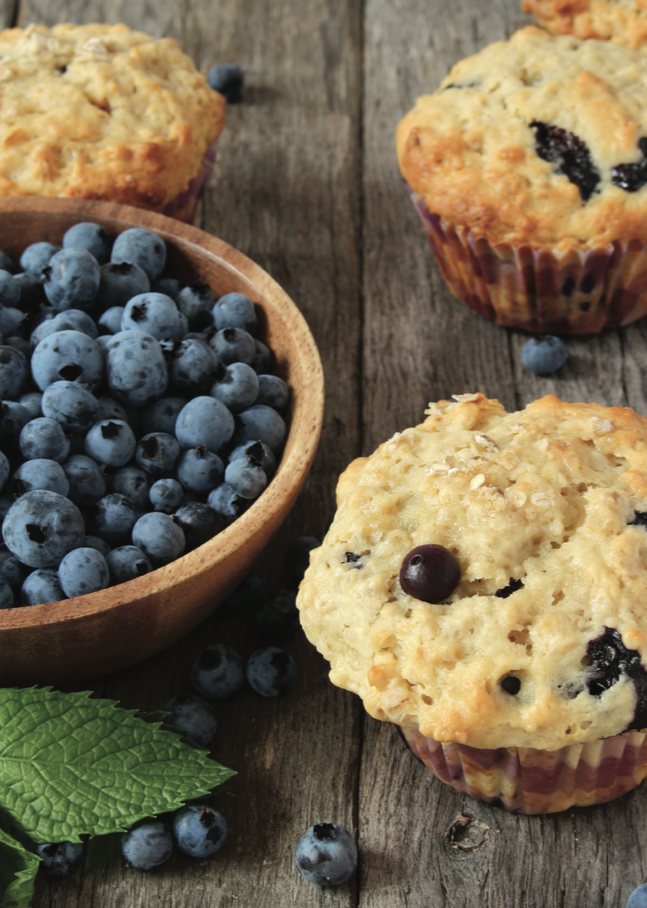 Aktara is often used for treatment.
Aktara is often used for treatment.
When attacked by scale insects, if there are not too many of them, you can try to wash them off with a cloth soaked in alcohol or soapy water. But, for prevention, it is better to treat with Actellik.
We would like to note that you should definitely inspect nearby plants for damage. It is important to prevent them from spreading around the garden, otherwise you will have to carry out long systematic treatments. Whichever remedy is chosen, it is better to re-use the drug after a week or two.
For prevention, it is important to remove debris, litter under the bush, especially when preparing the plant for winter.
Blueberries are susceptible to diseases such as mycosphereliosis, leaf rust and gray mold. In the first case, the disease manifests itself in the form of reddish and black spots on the crown, as if dirt had fallen on the bush.
Rust provokes the formation of brown and growing spots on the aerial parts of the bush. If the plant is affected by mold, this affects the fruits. They lose their juiciness and dry out.
If the plant is affected by mold, this affects the fruits. They lose their juiciness and dry out.
Fundazol, Quadris, Topaz can be used for treatment. In the case of fungal infections, treatment with ash infusion is also well suited.
Sometimes there are viral diseases. For example, ring or necrotic spotting, as well as mosaic lesions. There is no cure for such ailments, therefore, the affected plant must be removed from the soil and burned.
As a preventive measure, we recommend spraying the entire garden in spring and autumn with Bordeaux mixture or another similar product.
While watching the video, you will learn about growing blueberries.
Growing blueberries in the garden requires a lot of effort and patience. First of all, you need to choose a place for planting and prepare the soil.
This berry loves moisture, but you shouldn't flood it either, because it will lead to rotting of the roots. In order to achieve a large and high-quality crop, the bushes must be fertilized and maintain a suitable soil acidity.
Did you notice an error? Select it and press Ctrl+Enter to let us know.
This surprised me
Berries
Can Dogs Eat Blueberries? Are a Few Blueberries Safe for a Dog?
Warning : A non-numeric value encountered in 136
(Photo Photo: Getty Pictures)
Can dogs eat blueberries? The short answer is yes, dogs can eat blueberries, but there are some things you need to know before sharing them with your dog.
Blueberries are full of vitamins and nutrients that can give dogs a big health boost, and they are small and soft so they don't pose a choking hazard. Many commercial dog foods even include them in their formulas.
However, too much of a good thing can be bad.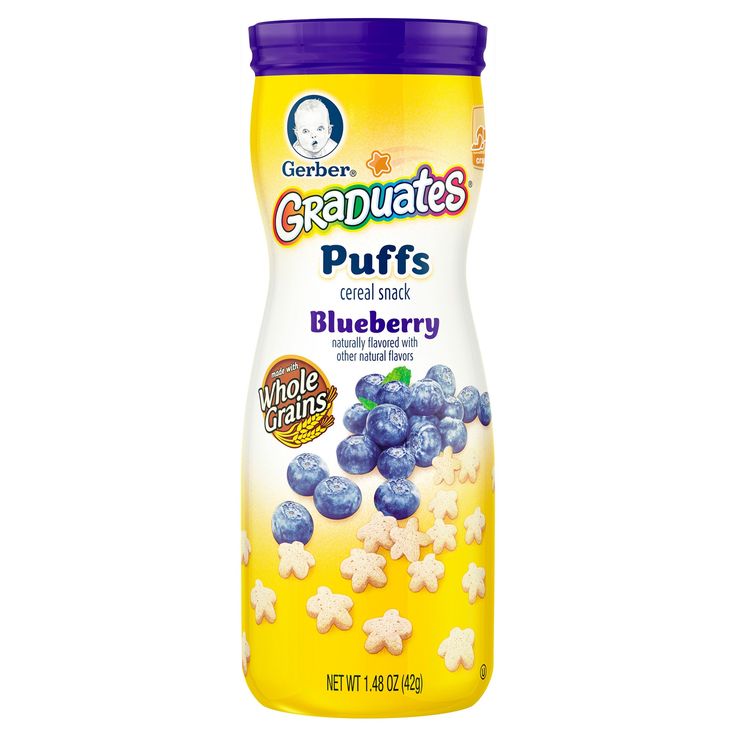 Blueberries are high in fiber, and while healthy in appropriate amounts, too much fiber can lead to indigestion and diarrhea.
Blueberries are high in fiber, and while healthy in appropriate amounts, too much fiber can lead to indigestion and diarrhea.
You should always ask your veterinarian before sharing human food with your dog, and blueberries are no exception. When fed properly, dogs can be a tasty and healthy treat.
Here's what you need to know about feeding blueberries to dogs.
How Good Are Blueberries For Dogs?
They may even help prevent heart disease and other conditions like the common cold.
Compared to other fruits, blueberries are relatively low in sugar and may even be suitable for dogs with diabetes, although you should ask your veterinarian before giving them to dogs with any medical condition.
When are blueberries bad for a dog?
(Photo Photo: Getty Pictures)
Artificially blueberry flavored foods are also not good for dogs. They often contain chemicals, preservatives, or other substances that are harmful to dogs.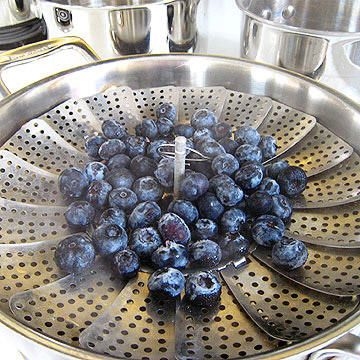
In addition, foods that contain blueberries may also have added sugar and other ingredients that can make dogs sick. Always check labels and ask your veterinarian before sharing human food with your dog.
These fruits are small and soft, so they are not very dangerous, but if they are frozen, they become hard and can cause choking in small dogs. Although unlikely, the risk can be avoided by simply making sure blueberries are thawed before feeding them to small dogs.
How Should You Feed Your Dog Blueberries?
(Photo Photo: Getty Pictures)
You should always ask your veterinarian before feeding your dog human food, including blueberries. They can guide you on the right portion size and make sure your dog's health won't be adversely affected by blueberries. Once you get well with your veterinarian, there are many ways to feed it to your dog.
Some people mash up blueberries and add them to their dog's diet for a delicious health boost.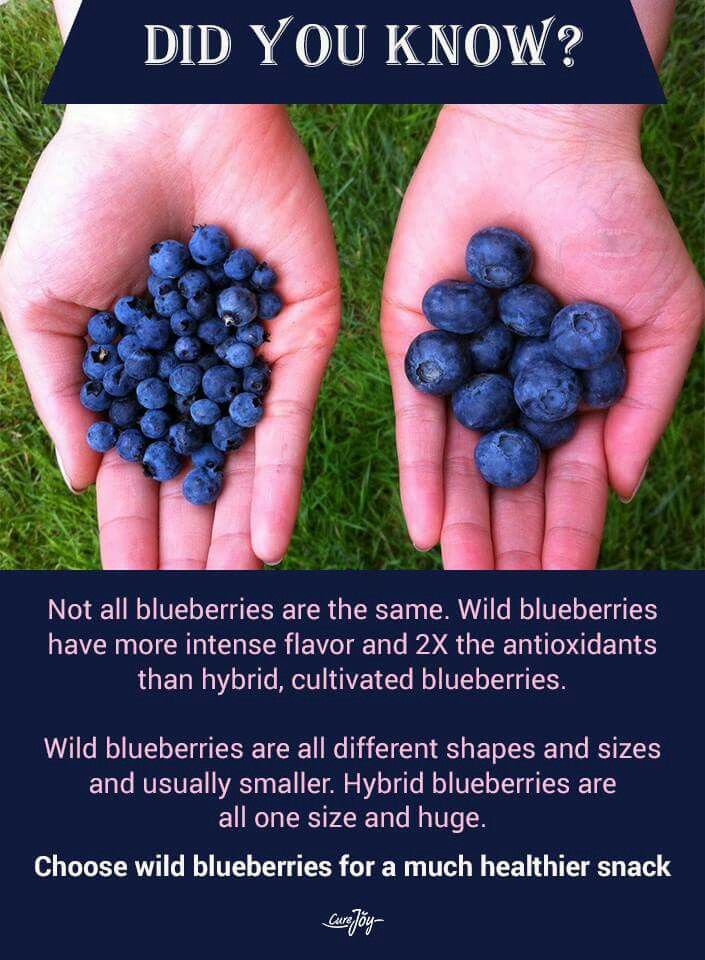 They can be used in treat recipes or be mixed together to create purees.
They can be used in treat recipes or be mixed together to create purees.
Most of the time, however, they are given raw to dogs. Because they are low in sugar and calories, they can make an excellent reward during workouts.
Always make sure to choose organic blueberries that have not been exposed to herbicides or pesticides, as those can make dogs sick, and make sure to wash them before you feed them to your dog.
Some people would like to freeze them for a refreshing summer treat, but it's important to note that freezing blueberries makes them hard, which can be a choking hazard for small dogs.
Some dogs find the taste to be bitter and unpleasant. For those dogs, there are many other fruits that are healthy, including strawberries and bananas.
Not every fruit is good for dogs. Grapes, for example, can lead to kidney failure. Research and check with your veterinarian before giving fruit to your dog.
Do you ever feed blueberries to your dog for treatment? Do you have any dog food recipes that include blueberries? Let us know in the comments below!
- About the author
- Do you want to contact me?
Vitaly Artemov
Editor-in-Chief, dogsta.